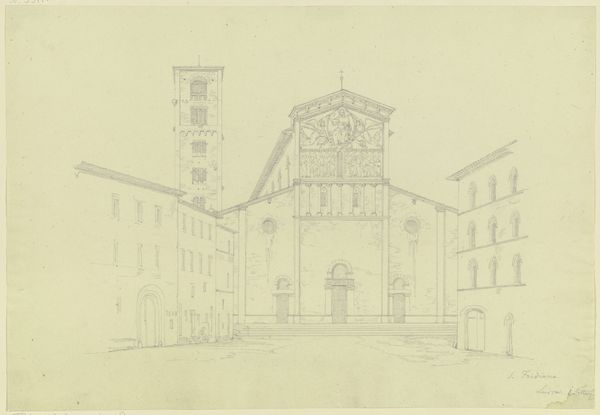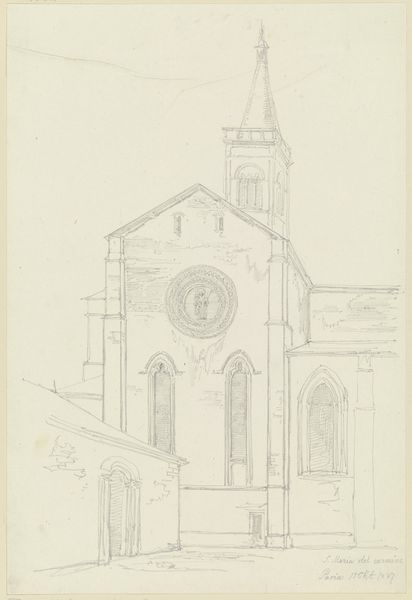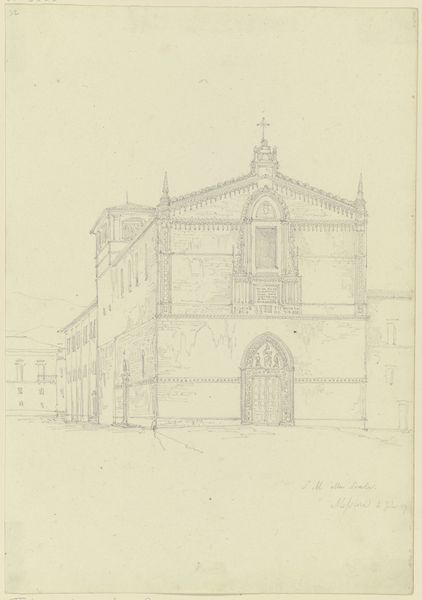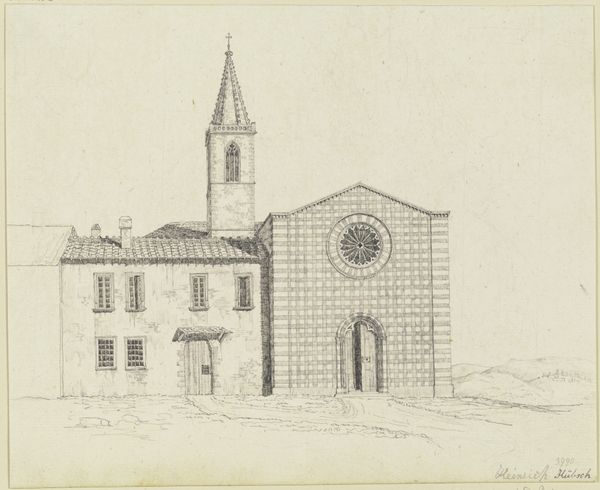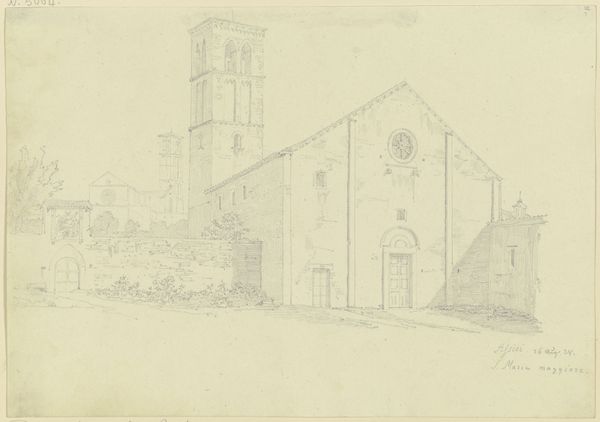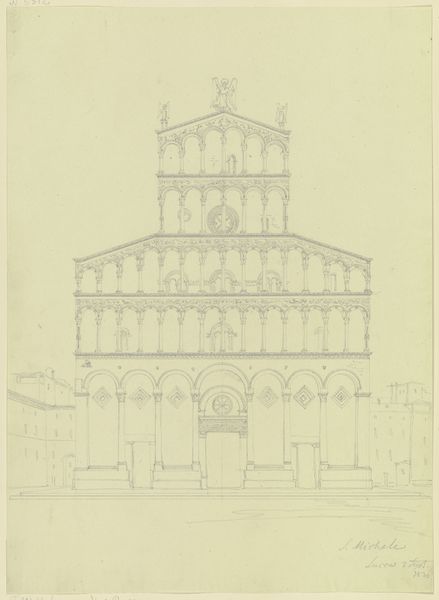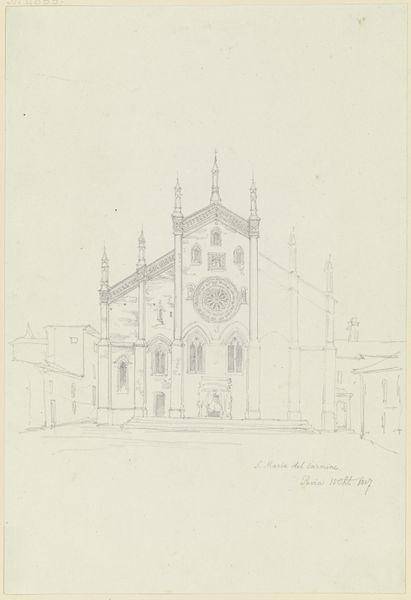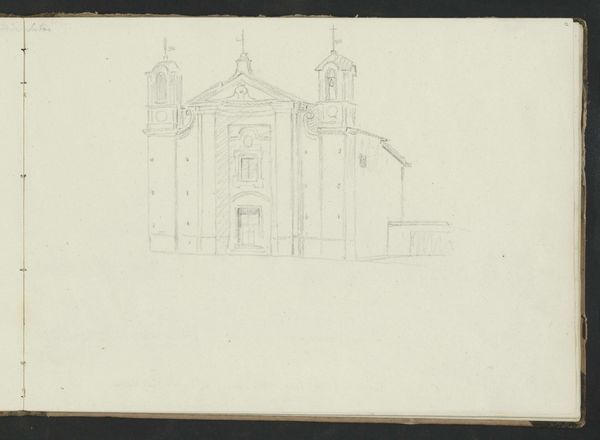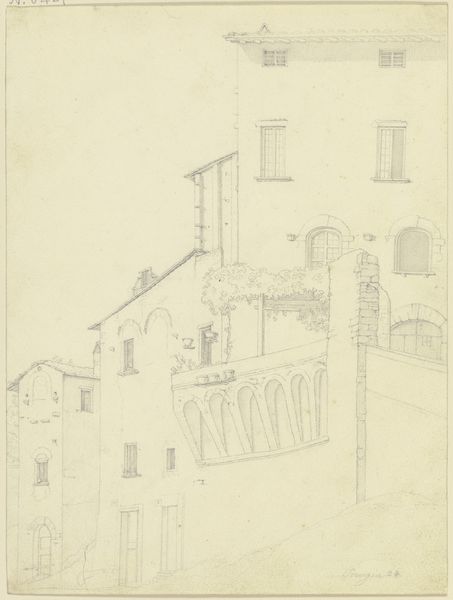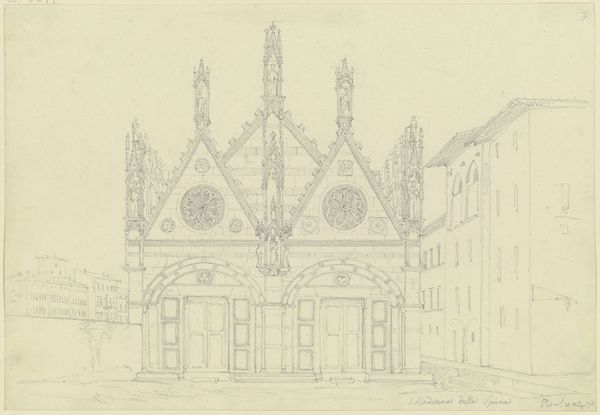
drawing, pencil, architecture
#
drawing
#
neoclacissism
#
16_19th-century
#
landscape
#
pencil
#
architecture
Copyright: Public Domain
Editor: This is Friedrich Maximilian Hessemer's pencil drawing, "S. Francesco d’Assisi in Palermo," likely from 1829. It's a meticulously rendered architectural study, and I'm struck by its almost dreamlike quality. What draws your eye when you look at this piece? Curator: The ghostliness, actually! Hessemer's captured more than just the stone and mortar. Doesn't it feel like a whisper from the past? A memory etched lightly on the page? And consider Palermo in 1829 – a cultural crossroads, simmering with history. This drawing isn’t just of a church; it’s of a specific time and place, filtered through Hessemer’s own lens. Do you see the Neoclassical elements clashing ever so slightly with the… almost playful Gothic detailing? Editor: I do. There’s something slightly off-kilter, a tension between styles. So, is he just documenting what he sees, or is there something more personal going on? Curator: Ah, there's always more, isn’t there? I feel Hessemer is less concerned with precise replication and more interested in capturing the feeling, the essence, of this space. Maybe he was drawn to that very tension, that mingling of past and present that the building embodies. Art is, after all, not a mirror, but a mind. It allows us to travel… imagine him standing there, pencil in hand, absorbing the Sicilian sun. It really is like visual time travel, don’t you think? Editor: I think I agree. Seeing the architecture contextualized this way, almost as a cultural artifact instead of *just* a building, really makes you think about how much a piece like this can communicate. Curator: Exactly. It’s a dialogue, not a monologue. We bring ourselves, our own histories, to meet Hessemer’s history, captured in pencil. Hopefully a little magic transpires in that meeting.
Comments
No comments
Be the first to comment and join the conversation on the ultimate creative platform.
